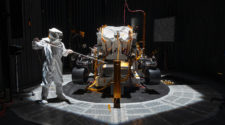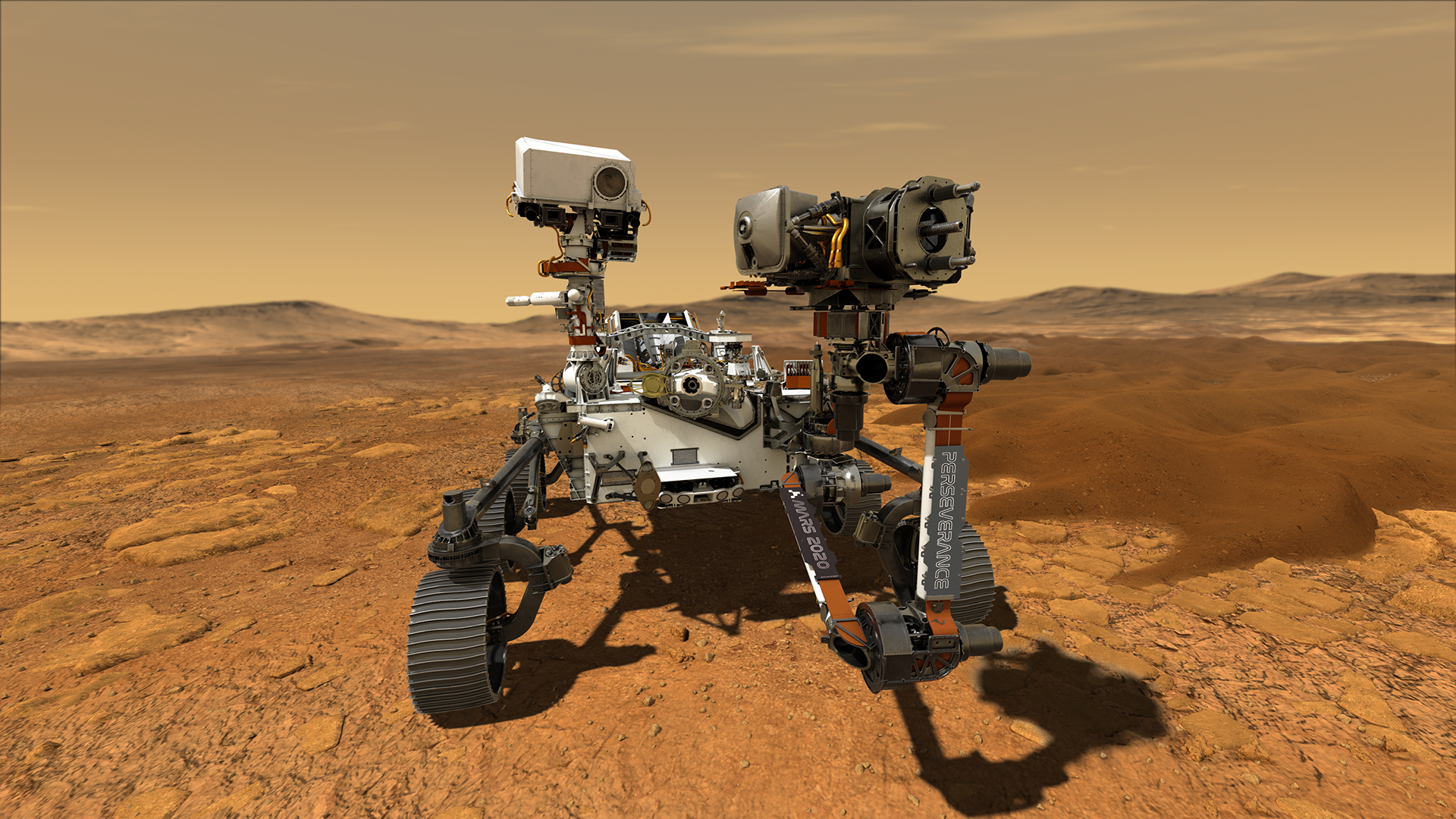
The Mars 2020 Perseverance mission is NASA’s next mission to Mars as well as being the most complex and scientifically advanced robotic mission sent to the Red Planet.
The $2.4 Billion Mars Perseverance rover is a flagship mission dedicated to the search for signs of life beyond Earth, as part of NASA’s Mars Exploration Program, a long-term effort of robotic exploration of the Red Planet.
The Perseverance Mars 2020 mission will search for signs of ancient microbial life, characterize Mars’ climate and geology, collect carefully selected samples for future return to Earth, and pave the way for human exploration of the Red Planet as soon as the 2030s.
Perseverance will also ferry a separate technology experiment to the surface of Mars — a helicopter named Ingenuity, the first aircraft to fly in a controlled way on another planet.
Launch is now targeted for a launch opportunity in the July/August timeframe when Earth and Mars are aligned in good positions relative to each other for landing on Mars.
The car-sized Perseverance Mars 2020 rover is targeted for liftoff on NET 30 July 2020 aboard a United Launch Alliance (ULA) Atlas V 541 rocket from Space Launch Complex 41 on Cape Canaveral Air Force Station, Florida.
The approximately month-long launch window for the Mars 2020 Perseverance rover mission currently extends until August 15.
Such opportunities are dictated purely by celestial mechanics and only occur every 26 months when the Earth and Mars are properly aligned.
NASA’s Mars 2020 Perseverance rover mission has suffered several significant delays to her launch from the Florida Space Coast to the Red Planet from the original target of July 17 due to contamination and rocket issues as well as staffing level restrictions due to the COVID-19 coronavirus pandemic.
If NASA and ULA cannot launch Mars 2020 Perseverance within the narrow one-month-long window of opportunity, she will have to wait another two years until 2022 until the orbits of our Home Planet and the Red Planet align properly to enable blastoff. Such a postponement would cost $0.5 Billion additional funding and the rover would be placed in storage.
After launch Mars 2020 Perseverance begins a seven-month-long 314 million miles (505 million kilometers) interplanetary journey to the Red Planet where it will search for signs of life.
Perseverance is scheduled to touch down in an area of Mars known as Jezero Crater on Feb. 18, 2021. The crater is home to an ancient dried-up river delta and a lake that once filled it.
The one-ton rover will spend at least one Mars year (two Earth years) exploring the landing site region.
Perseverance is a robotic scientist weighing about 2,260 pounds (1,025 kilograms) and includes a robotic arm with a 99-pound (45-kilogram) turret at the end.
The rover is equipped with six advanced aluminum wheels on a rocker-bogie system.
The SUV sized rover dimensions are 10 feet (3 m) long, 9 feet (2.7 m) wide and 7 feet (2.2 m) tall with a 7 feet (2.1 meters) long robotic arm.
The rover is equipped with seven different scientific instruments and the mission includes 25 cameras – the most ever to Mars and deep space. The rover itself is equipped with 19 cameras.
The science payload has a mass of 130 pounds (59 kilograms) for seven instruments: Mastcam-Z, Mars Environmental Dynamics Analyzer (MEDA), Mars Oxygen In-Situ Resource Utilization Experiment (MOXIE), Planetary Instrument for X-ray Lithochemistry (PIXL), Radar Imager for Mars’ Subsurface Experiment (RIMFAX), Scanning Habitable Environments with Raman & Luminescence for Organics & Chemicals (SHERLOC) and SuperCam.
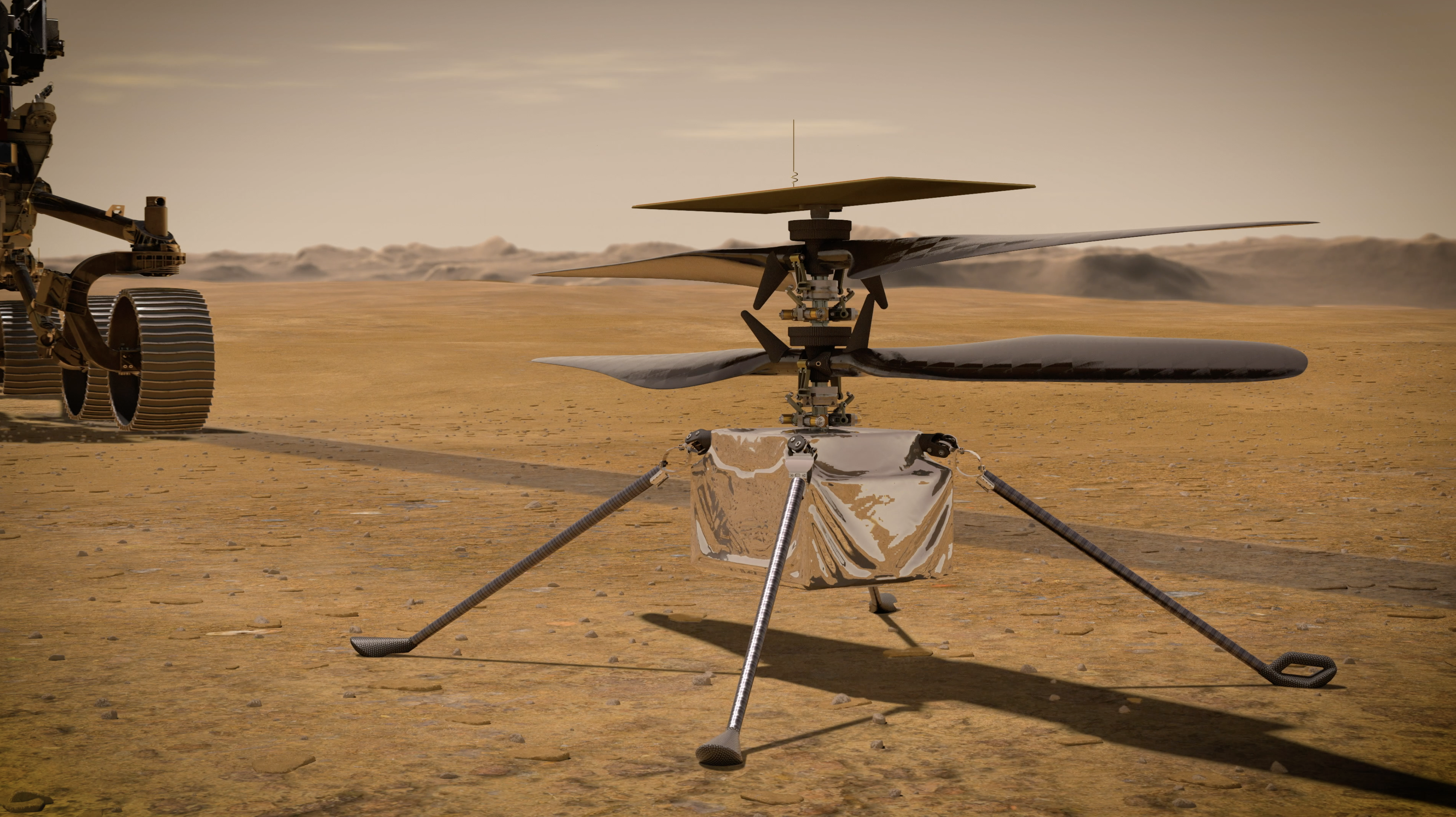
The solar-powered Ingenuity helicopter is a technology demonstration experiment aimed at attempting the first flight on Mars.
The four-legged Ingenuity has a mass of about 4.0 pounds (1.8 kilograms) and stands 1.6 feet or 19 inches (0.49 meters) high. It is equipped with two counter-rotating blades for lift spinning at about 2,400 rpm and two cameras.
To keep mission costs and risks as low as possible, the Mars 2020 design is based on NASA’s successful Mars Science Laboratory mission architecture, including its Curiosity rover and proven landing system.
Perseverance is about 278 pounds (126 kilograms) heavier than Curiosity.
However, the suite of seven science instruments are completely new and some hardware such as the wheels have been modified based on experience with Curiosity where they suffered damage over time on the rough terrain.
The rover also carries the first Mars Helicopter – named Ingenuity on its belly. The helicopter is a technology experiment and planned as the first aircraft to fly in a controlled way on another planet.
Names:
NASA conducted a “Name the Rover” contest for the Mars 2020 rover and helicopter with more than 28,000 essays submitted.
Rover: Perseverance, submitted by Alex Mather, 13, of Lake Braddock Secondary School in Burke, Virginia.
Helicopter: Ingenuity, submitted by Vaneeza Rupani, 17, of Tuscaloosa County High School in Northport, Alabama.

Microchip:
The names of over 10.9 million people are stenciled by electron beam onto three fingernail-sized silicon chips as part of NASA’s “Send Your Name to Mars” campaign

Landing Site:
Jezero Crater on Mars is a 28-mile-wide (45-kilometer-wide) crater on the western edge of Isidis Planitia, a giant impact basin just north of the Martian equator. The crater was a possible oasis in its distant past.
Between 3 billion and 4 billion years ago, a river there flowed into a body of water the size of Lake Tahoe, depositing sediments packed with carbonite minerals and clay. The Perseverance science team believes this ancient river delta could have collected and preserved organic molecules and other potential signs of microbial life.
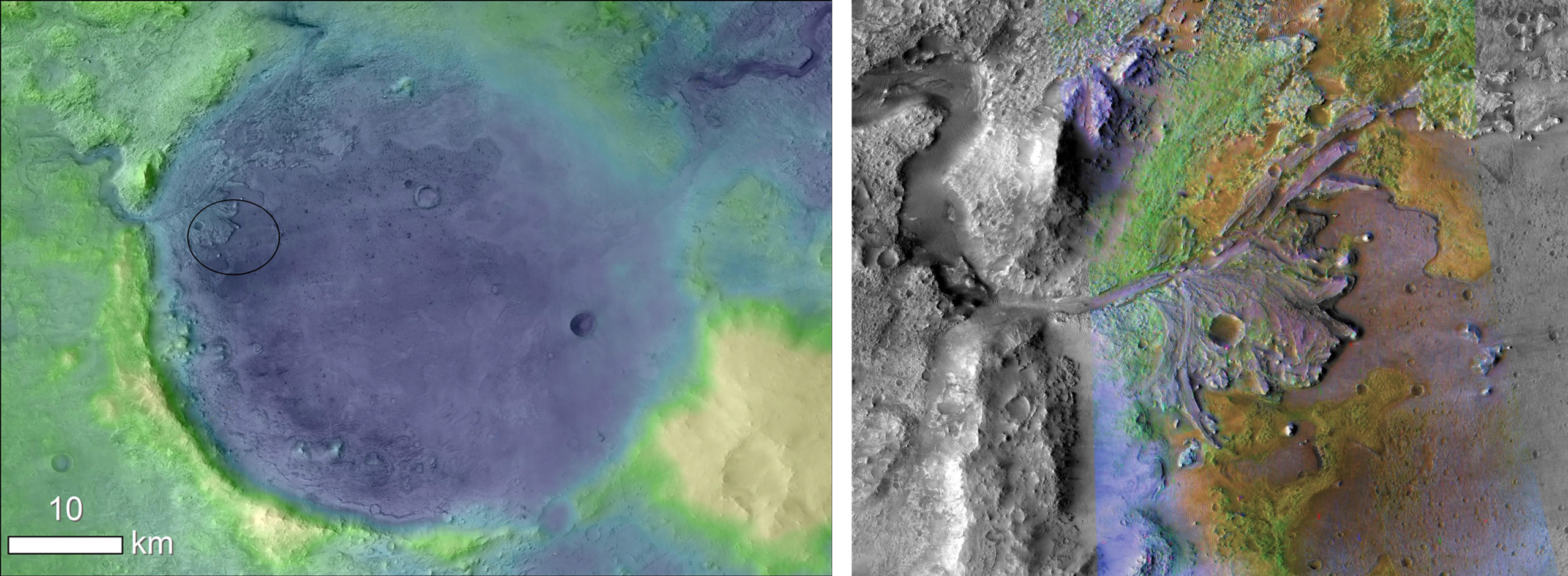
Mars 2020 Components:
Based on the successful Mars Science Laboratory Curiosity design.
Cruise Stage: Configuration for travel between Earth and Mars includes an aeroshell (backshell with heat shield) in which the rover and its landing system are enclosed. Powered by solar cells equipped with thrusters.
Entry, Descent and Landing (EDL) system: Configuration for entry into the Martian atmosphere. Includes the aeroshell, parachute, descent vehicle, and structure for a skycrane maneuver that will lower the rover to the Martian surface on tethers.
Rover: 6-wheeled rover with science instruments.
Science and Sampling Goals:
The Perseverance rover will explore the geologically diverse Jezero Crater landing site, assess it for ancient habitability, and search for sign ancient life especially in certain types of rocks that preserve signs of life over time.
The Mars Perseverance mission addresses high-priority science goals for Mars exploration, including key questions about the potential for life on Mars. The mission takes the next step by not only seeking signs of habitable conditions on Mars in the ancient past but also searching for signs of past microbial life itself.
The Mars Perseverance rover introduces a drill that can collect core samples of the most promising rocks and soils and set them aside in a “cache” on the surface of Mars.
The rover will gather a few dozen rock and soil samples and place them in sealed tubes for returned to Earth by a future NASA mission.
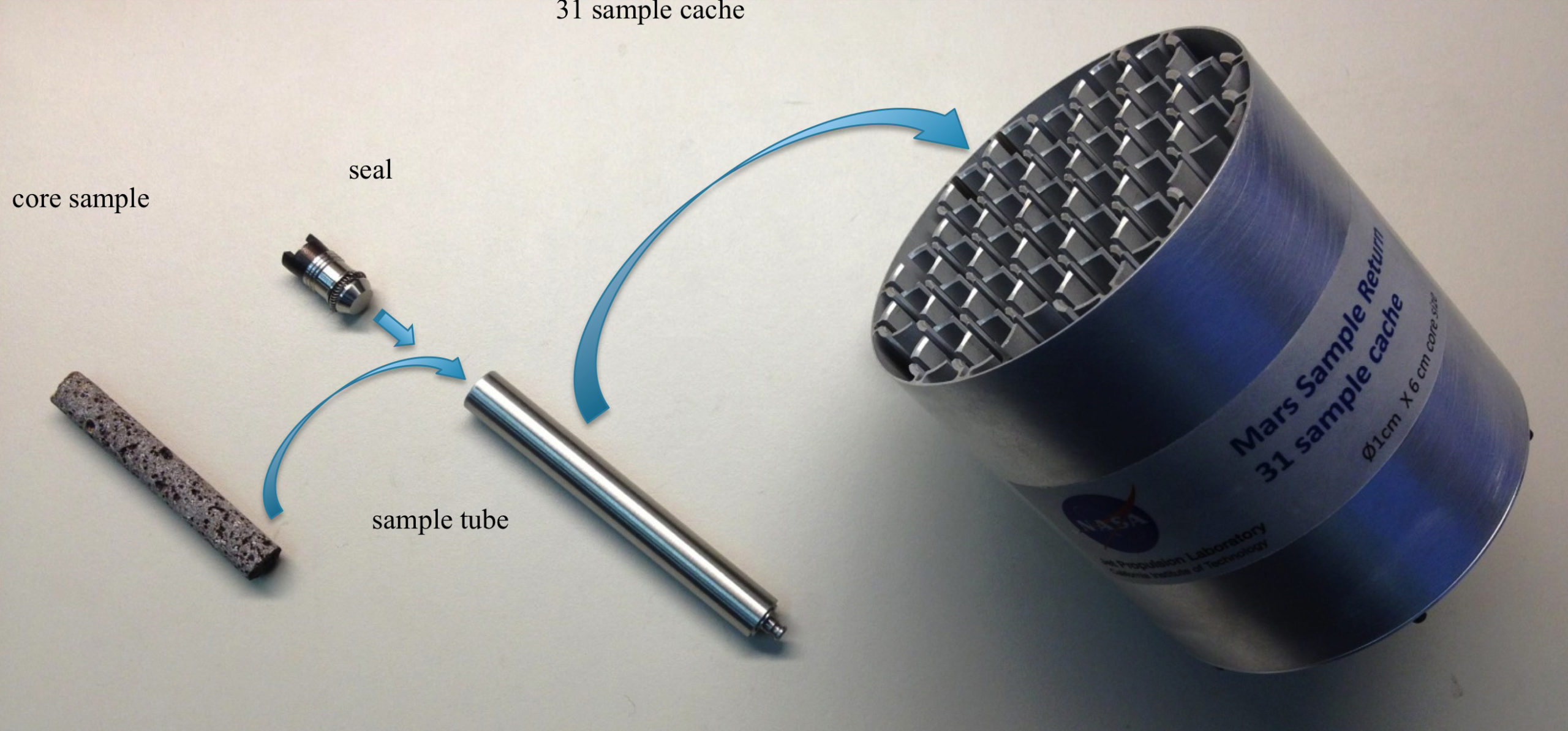
The mission also provides opportunities to gather knowledge and demonstrate technologies that address the challenges of future human expeditions to Mars. These include testing a method for producing oxygen from the Martian atmosphere, identifying other resources (such as subsurface water), improving landing techniques, and characterizing weather, dust, and other potential environmental conditions that could affect future astronauts living and working on Mars.
Science Instrument Payload:
Perseverance will carry seven instruments to conduct unprecedented science and test new technology on the Red Planet. They are:
• Mastcam-Z: An advanced camera system with panoramic and stereoscopic imaging capability with the ability to zoom. The instrument also will determine the mineralogy of the Martian surface and assist with rover operations. The principal investigator is James Bell, Arizona State University in Tempe.
• SuperCam: An instrument that can provide imaging, chemical composition analysis, and mineralogy at a distance. The principal investigator is Roger Wiens, Los Alamos National Laboratory, Los Alamos, New Mexico. This instrument also has a significant contribution from the Centre National d’Etudes Spatiales, Institut de Recherche en Astrophysique et Planétologie (CNES/IRAP), France.
• Planetary Instrument for X-ray Lithochemistry (PIXL): An X-ray fluorescence spectrometer and high-resolution imager to map the fine-scale elemental composition of Martian surface materials. PIXL will provide capabilities that permit more detailed detection and analysis of chemical elements than ever before. The principal investigator is Abigail Allwood, NASA’s Jet Propulsion Laboratory (JPL) in Pasadena, California.
• Scanning Habitable Environments with Raman & Luminescence for Organics and Chemicals (SHERLOC): A spectrometer that will provide fine-scale imaging and uses an ultraviolet (UV) laser to map mineralogy and organic compounds. SHERLOC will be the first UV Raman spectrometer to fly to the surface of Mars and will provide complementary measurements with other instruments in the payload. SHERLOC includes a high-resolution color camera for microscopic imaging of Mars’ surface. The principal investigator is Luther Beegle, JPL.
• The Mars Oxygen In-Situ Resource Utilization Experiment (MOXIE): A technology demonstration that will produce oxygen from Martian atmospheric carbon dioxide. If successful, MOXIE’s technology could be used by future astronauts on Mars to burn rocket fuel for returning to Earth. The principal investigator is Michael Hecht, Massachusetts Institute of Technology, Cambridge, Massachusetts.
• Mars Environmental Dynamics Analyzer (MEDA): A set of sensors that will provide measurements of temperature, wind speed and direction, pressure, relative humidity, and dust size and shape. The principal investigator is Jose Rodriguez-Manfredi, Centro de Astrobiología, Instituto Nacional de Tecnica Aeroespacial, Spain.
• The Radar Imager for Mars’ Subsurface Experiment (RIMFAX): A ground-penetrating radar that will provide centimeter-scale resolution of the geologic structure of the subsurface. The principal investigator is Svein-Erik Hamran, the Norwegian Defense Research Establishment, Norway.
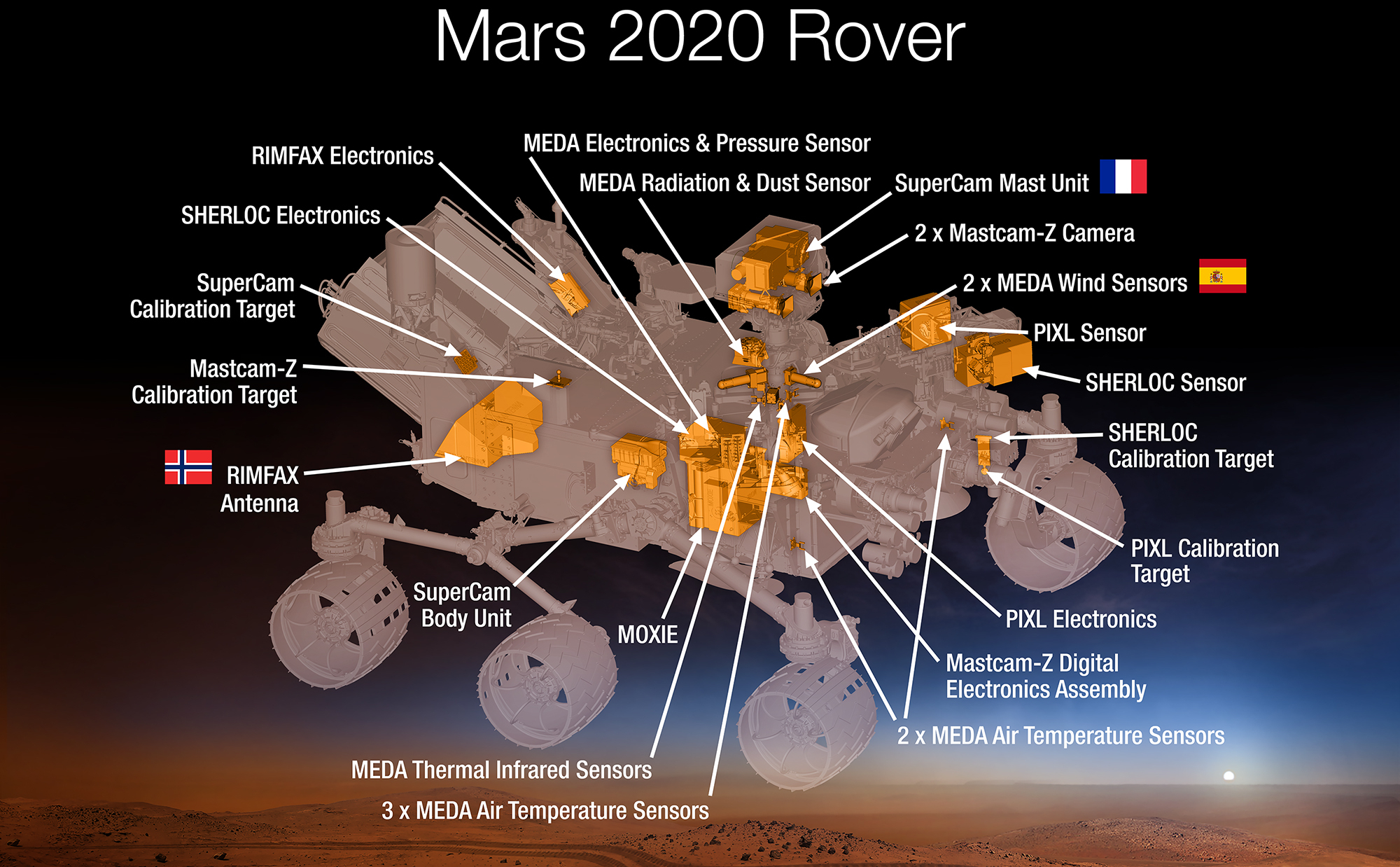
Ingenuity Mars Helicopter:
Ingenuity is a technology demonstration experiment that seeks to test a new capability for the first time – namely the first aircraft to attempt controlled flight on another planet. It is attached to the belly
Mass: about 4.0 pounds (1.8 kg). Height: 1.6 feet (0.49 meters)
Rotor system: Two pairs of counter-rotating blades, spanning 4 feet (1.2 meters) in diameter, spinning at about 2,400 rpm – about eight times as fast as a standard helicopter on Earth.
Equipped with innovative solar cells, battery, avionics, sensors, telecommunications, and other designs and algorithms.
Many components are commercial, off-the-shelf parts from the world of smartphones, including two cameras, an inertial measurement unit (measuring movement), an altimeter (measuring altitude), an inclinometer (measuring tilt angles) and computer processors.
Fuselage (body) dimensions: 0.446 feet by 0.64 feet by 0.535 feet (13.6 centimeters by 19.5 centimeters by 16.3 centimeters); four legs, each about 1.26 feet (0.384 meters) long, giving the helicopter about 0.427 feet (0.13 meters) of clearance above the ground
Power: Solar panel that charges lithium-ion batteries, providing enough energy for one 90-second flight per Martian day (about 350 watts of average power during flight)
Ingenuity is attached to the rover belly and will be deployed about two months after landing onto a flat Martian field.
Ingenuity will fly autonomously. No joystick with real-time human intervention from Earth due to communications delays across interplanetary distances.
Up to five test flight attempts are planned by the helicopter team within a 30-Martian-day (31-Earth-day) window.

Cameras:
19 cameras total on the rover: 9 for engineering (color); 3 for entry, descent and landing (1 black-and-white dedicated to Terrain-Relative Navigation and 2 color for public engagement and engineering reconstruction of entry, descent and landing); 2 for Mastcam-Z (color with zoom); 1 for SuperCam (color); 2 for SHERLOC (color); 1 for PIXL (black-and-white with some color capabilities); and 1 for MEDA (black-and-white)
3 cameras on the back shell: all color, all looking up to capture parachute inflation
1 camera on the descent stage: color, looking down to view the rover from above
2 cameras on Ingenuity: 1 color for an oblique view for terrain images and 1 black-and-white for navigation
Microphones:
1 on SuperCam and 1 on the side of the rover for public engagement and later entry, descent and landing analysis
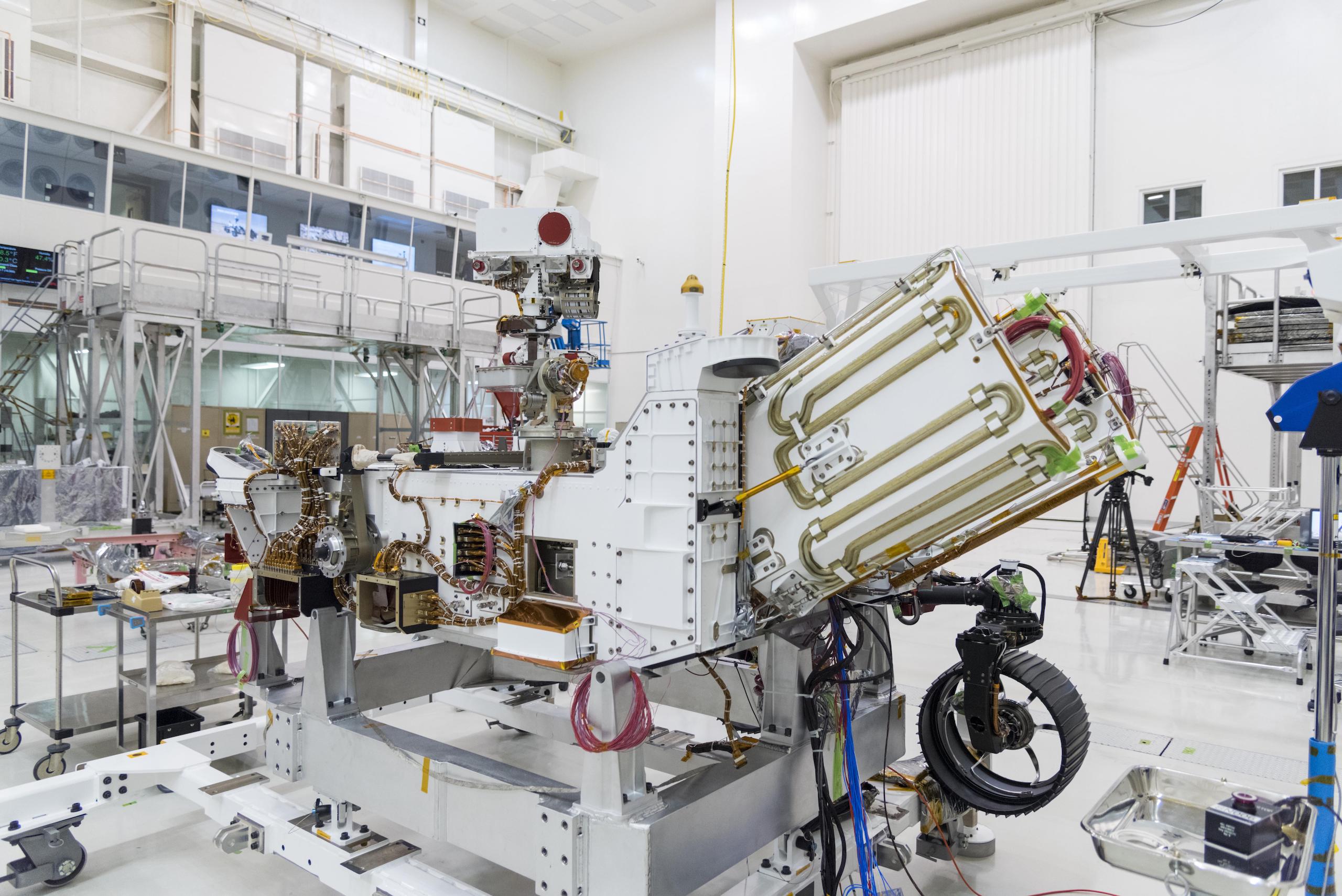
Power:
The power system is a Multi-Mission Radioisotope Thermoelectric Generator (MMRTG) provided by the U.S. Department of Energy with a mass of 99 pounds (45 kg) and holds 10.6 pounds (4.8 kg) of plutonium dioxide. Heat generated from the natural decay of plutonium-238 will be converted to a steady flow of about 110 watts of electricity. Two lithium-ion rechargeable batteries are available to meet the peak demands of rover activities when the demand temporarily exceeds the MMRTG’s electrical output levels. Overall 14-year operational lifetime.
ULA Atlas V rocket:
Mars 2020 liftoff is targeted for July 30, 2020, at 7: 50 a.m. ET, aboard a two-stage United Launch Alliance (ULA) Atlas V 541 rocket from Space Launch Complex 41 on Cape Canaveral Air Force Station, Florida. Procured under NASA’s Launch Services Program.
The 541 configuration features a 5-meter fairing, 4 solid rocket boosters, and a single-engine Centaur upper stage.
Height: 191 feet (58 m)
Mass, fully fueled, with spacecraft on top: About 1.17 million pounds (531,000 kg)
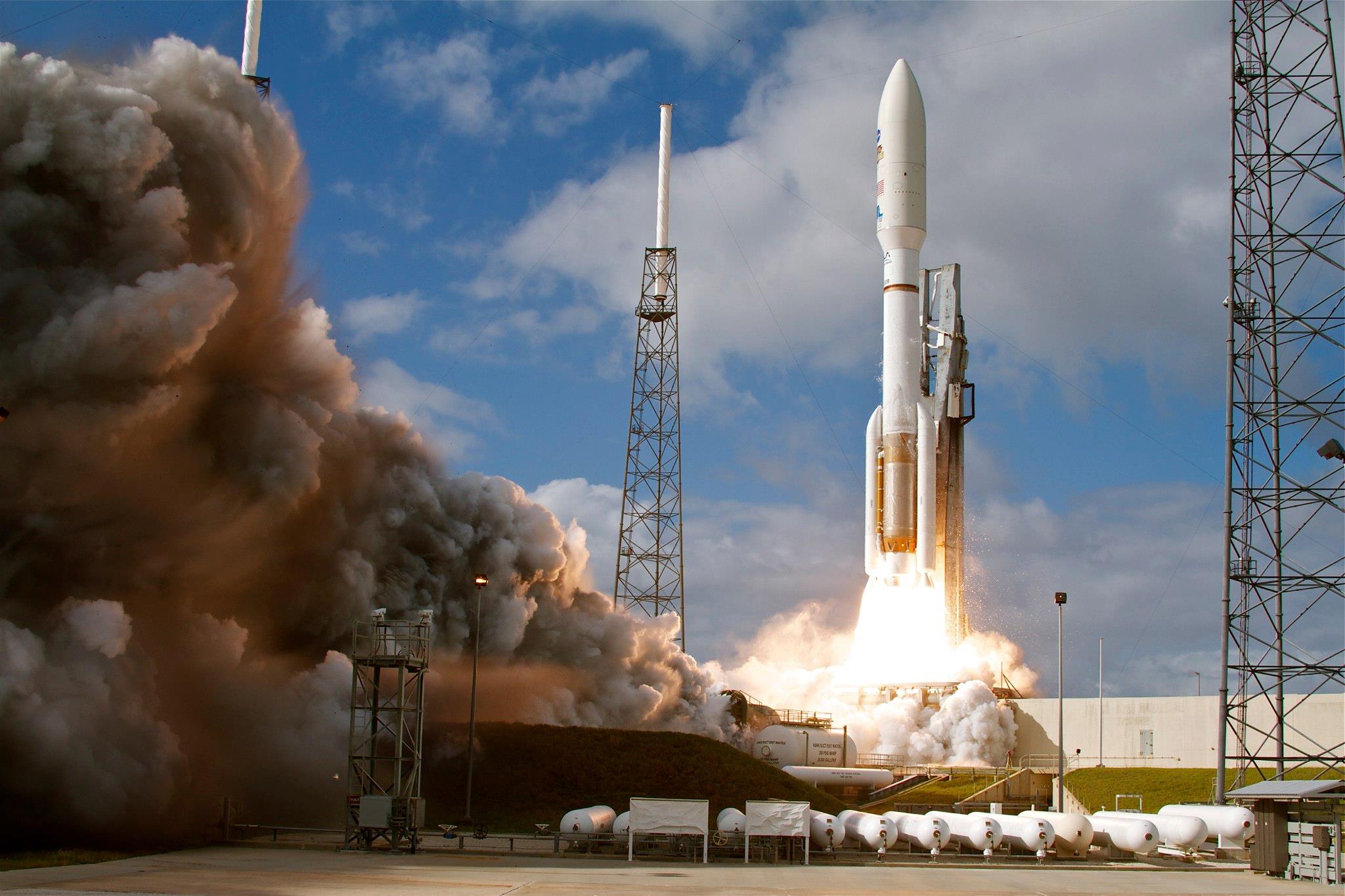
Mission Website:
https://mars.nasa.gov/mars2020/
Social Media:
Twitter: https://twitter.com/NASAPersevere/ @NASAPersevere
Facebook: https://www.facebook.com/NASAPersevere/
Program Management:
The Mars 2020 Project is managed for NASA’s Science Mission Directorate, Washington, D.C., by the Jet Propulsion Laboratory (JPL), a division of Caltech in Pasadena, California.



